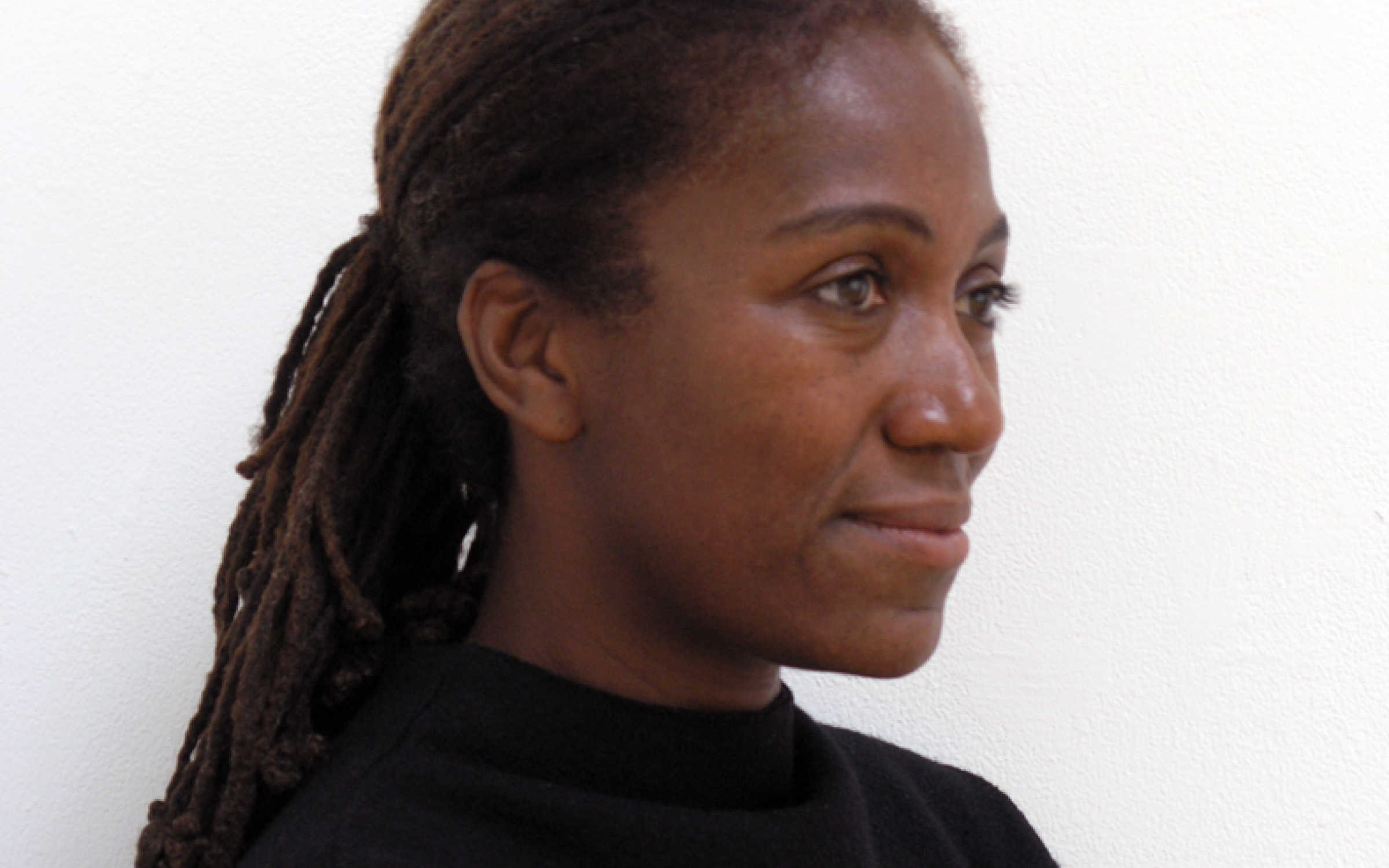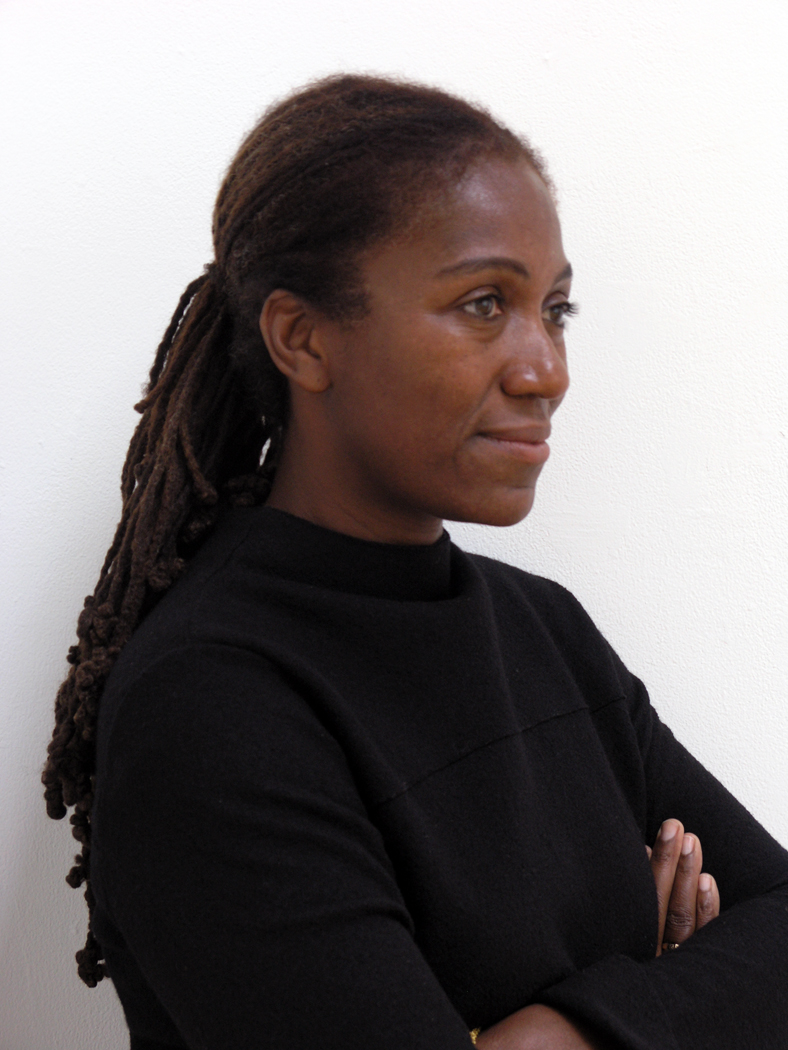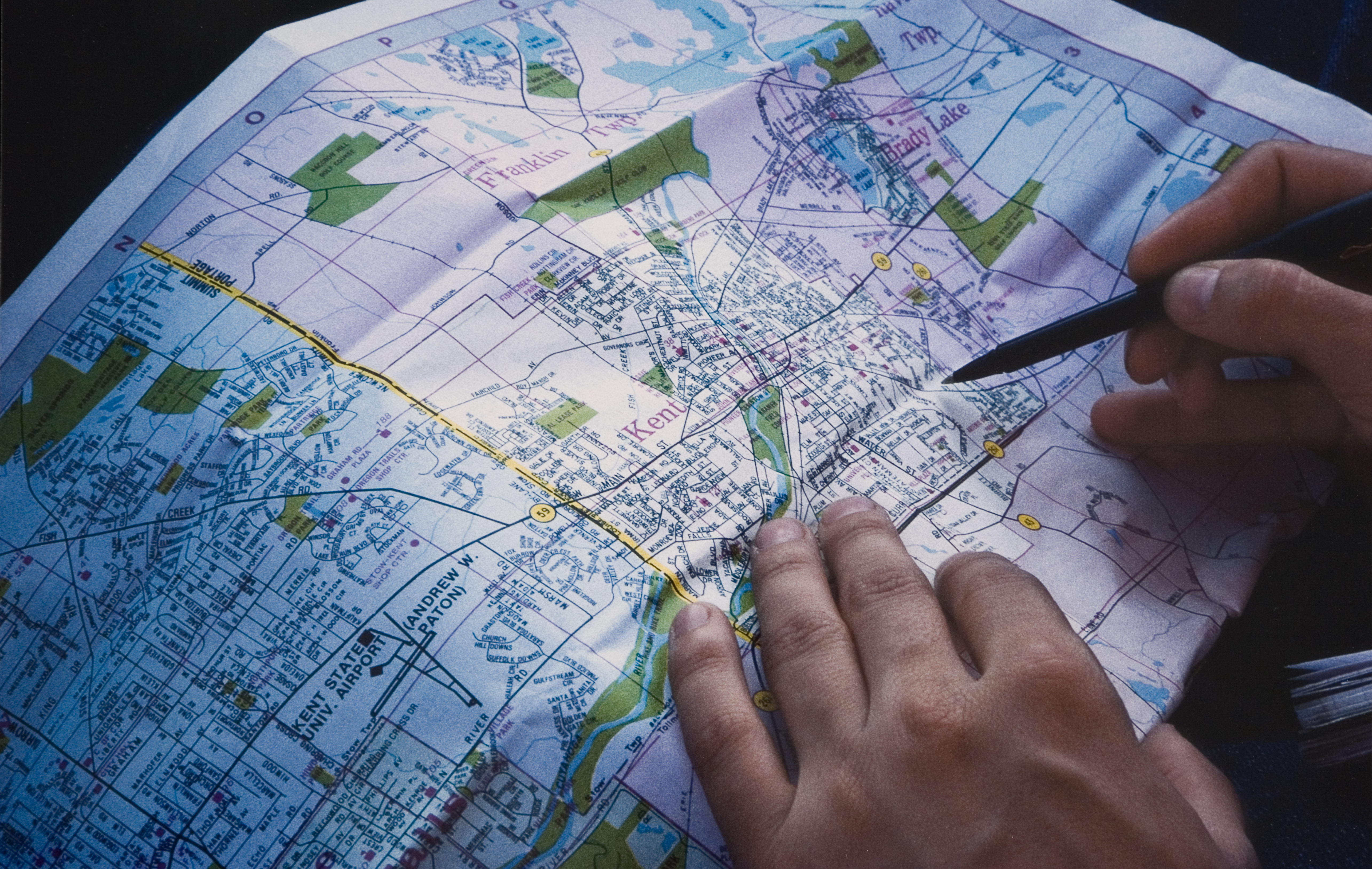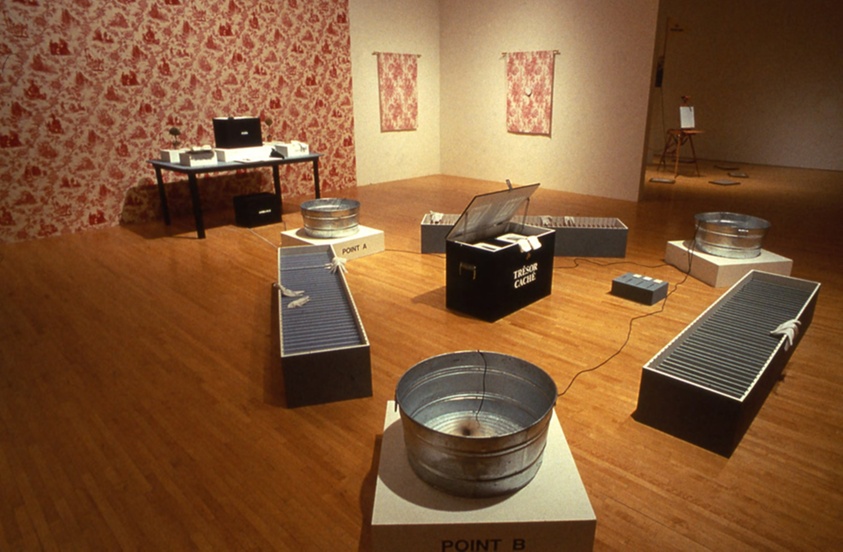
By J. Attridge, UMFA communications coordinator
Following the exhibition Miscellaneous at the DAAD Galerie Berlin and Certain Miscellanies at De Appel Foundation, Renée Green published her 1996 book Certain Miscellanies: Some Documents. On the back, Green describes herself in a wry third-person character profile saying, “The character is often visibly detectable as a female with brown skin and dredlocks [sic]. She was born in the U.S. and speaks English as her native tongue, but she studied French and in brief exchanges can seem to be from some French speaking place... She’s been asked at various times and in various places whether she’s from Martinique, Puerto Rico, Guyana, Jamaica, some island near Venezuela, Paris, London, and New York... She is from the Metropolis, in her case New York.”

Renée Green is the featured presenter for this year’s Holt/Smithson Foundation Annual Lecture hosted by the UMFA on Friday, September 27 at 6:00 pm. The Holt/Smithson Foundation Annual Lecture Series is a ten-year program that invites artists, writers, and thinkers to extend the creative legacies of Nancy Holt and Robert Smithson. This year’s lecture titled Imagining Contact: Then, When, Now, Here will be in conversation with Lisa Le Feuvre, Executive Director of Holt/Smithson Foundation.
Green is a multifaceted artist, writer, and educator known for her meticulous multimedia installations which utilize film, architecture, sound, and more. Her works include Partially Buried in Three Parts (1996-1997), Inevitable Distances at Migros Museum für Gegenwartskunst, TITAN an outdoor exhibition in a series of phone booths in New York City, and The Island Project with the Holt/Smithson Foundation.

Green’s work as an artist is often archival, complex, and highly formalized. She described her work during a symposium for Negotiations in the Contact Zone saying:
I wanted to begin by examining an artifact, a text, a painting or a group of paintings, a decorative object, an image, a novel, a poem, a garden, a palace, a house. By beginning with these objects or places, and the contexts in which they appeared, it was possible to detect the intricate working of certain ideologies which were being put forth ... and to attempt to decipher the contradictory pleasure which might accompany them.
One installation, Mise-en-Scène: Commemorative Toile (1992-1993), examined the relationship between a French toile textile and the trans-Atlantic slave trade. Generally, a toile depicts idyllic pastoral scenes and floral prints. But in Mise-en-Scène: Commemorative Toile, Green imbued the floor-to-ceiling toile with horrific scenes of enslavement and uprisings in French colonies. The exhibition also included a stool upholstered in the same toile; a music box labeled “ambience” that played baroque melodies, a tightly packed card file boxes that chronicled the names of French slave ships, the languages spoken by those who were enslaved, and the years the trade was active; motorized toy boats arranged in three water basins suggested that the triangular trade “continues to spin the wheels of global capitalism and that the colonial past is a constant specter of the present.”

Among Green’s other installations are Muriel's Words (2004), a recorded sound installation where Green whispered excerpts from the writings of Muriel Rukeyser, the city-spanning Contact (2022) hosted by MoCA Cleveland and the ongoing collaboration The Island Project with the Holt/Smithson Foundation.
As a writer, Green is equally prolific and meticulous. A selection of her recent books includes Inevitable Distances (2022, Hatje Cantz); Pacing (2020, Carpenter Center for the Visual Arts & Free Agent Media, Cambridge, MA), and Other Planes of There: Selected Writings (2014, Duke University Press, Durham). A cornerstone of Green’s publications are her Catalogues. Catalogues are an important tool of many artists but for Green, whose projects are uniquely complicated and at times spread between numerous years and locations, her artist catalogues serve as an artist book, as an account of her exhibitions, as well as to collect the many records that are created for each of her projects.
Green is also an accomplished educator. She is currently a professor at the Art, Culture and Technology program at MIT, School of Architecture & Planning. She was previously a professor and Dean of Graduate Studies at the San Francisco Art Institute, guest faculty at the Whitney Museum of American Art Independent Study Program, and guest professor at Yale University, Vermont College, Hochschule der Kunst in Berlin, and the Hochschule für Angewandte Kunst, Vienna.
Don’t miss your chance to hear this incredible artist, writer, and educator speak in person at the Utah Museum of Fine Arts. Renée Green’s lecture, Imagining Contact: Then, When, Now, Here, will explore “questions of both space and place arise. Questions of time also arise. Questions of travel, questions of the environment, built and unbuilt, emerge too as I think and feel, now, here. On earth.”
Reserve your seat at the lecture here.
Join us at Robert Smithson's land art masterwork Spiral Jetty on September 28.
